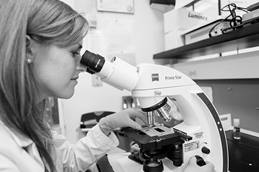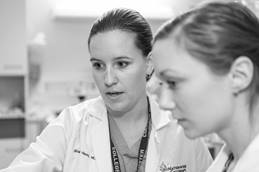Center for Cardiovascular Research
The mission of the Center for Cardiovascular Research is to conduct innovative, mechanism-based research leading to improved therapies and outcomes for pediatric cardiovascular diseases and to foster preventive strategies and promote cardiovascular health in adults.

The Abigail Wexner Research Institute is ranked among the top 10 for NIH funding among free-standing children's hospitals.
Our Areas of Focus
- Genetics of Congenital Heart Disease
- Molecular Mechanisms Underlying Heart and Blood Vessel Development
- Congenital and Acquired Heart Valve Disease
- Micro- and Macro-Vascular Remodeling and Aortic Aneurysmal Disease
- Cardiac Regeneration and Stem Cell Biology
Center Extramural Grant Funding
| Investigator | Title | Sponsor | Award Years |
| Vidu Garg | Mechanisms and Therapeutics for Congenital Aortic Valve Disease | NIH/NHLBI | 2024 - 2028 |
| Vidu Garg | Epigenetic Mechanisms Underlying Maternal Diabetes Associated Cardiac Malformations | NIH/NHLBI | 2019 - 2025 |
| Vidu Garg Carl Backes |
Integrative Research Training Program in Pediatric Cardiopulmonary Disease (T32) | NIH/NHLBI | 2023 - 2028 |
|
Vidu Garg |
Research Experiences in Childhood Heart, Lung, and Blood Science- REACH LABS (R25) | NIH/NHLBI | 2023 - 2028 |
| Vidu Garg Peter White |
A Multi-omic approach towards improving candidate gene identification and variant prioritization in patients with congenital heart disease | NIH/NHLBI | 2022 - 2024 |
| Deqiang Li | Cardiac regeneration by histone deacetylases | NIH/NHLBI | 2022 - 2025 |
| Brenda Lilly Aaron Trask |
The Role of Notch Signaling in Type 2 Diabetic Coronary Microvascular Disease | NIH/NHLBI | 2023 - 2027 |
| Mingtao Zhao | Dissecting SARS-CoV-2 infection in Down syndrome with congenital heart defects using patient-specific iPSCs | NIH/NHLBI | 2022 - 2025 |
| Mingtao Zhao | An integrated human stem cell model for elucidating myocardial-endocardial interactions in cardiac development and disease | NIH/NHLBI | 2021 - 2026 |
| Deqiang Li | An unexpected player in the cardiac endothelium regulating myocardial morphogenesis | AHA | 2024 - 2027 |
| Mingtao Zhao | Prenatal Detection of Fetal Heart Defects Using Maternal Cell-Free RNA Biomarkers | AHA | 2024 - 2027 |
| Vidu Garg | Nationwide Children’s Hospital Summer Undergraduate Research Program | AHA | 2022 - 2024 |
| Jihyun Jang | Histone modifier determines chamber-specific cardiomyocyte proportions from human pluripotent stem cell cardiac lineage | AHA | 2023 - 2025 |
| Jihyun Jang | Endocardial Zinc Transporter Regulates Ventricular Non-Compaction Cardiomyopathy | AHA | 2023 - 2026 |
| Mingtao Zhao | Precision modeling of single ventricle heart defects using patient- and chamber-specific cardiac organoids | AHA | 2023 - 2025 |
| Mingtao Zhao | PULSE-SVA Network: Personalized Understanding from Linked Simulations & Electrophysiology in Single Ventricle Arrhythmia | AHA/Additional Ventures | 2024 - 2027 |
| Mingtao Zhao | Elucidating etiologies of HLHS and HRHS using patient-specific cardioids | Additional Ventures | 2024 - 2027 |
| Mingtao Zhao | Maternal blood biomarker discovery for predicting ventricular growth in human fetuses with pulmonary atresia with intact ventricular septum (PA-IVS) | Additional Ventures | 2021 - 2024 |
Join Our Team











